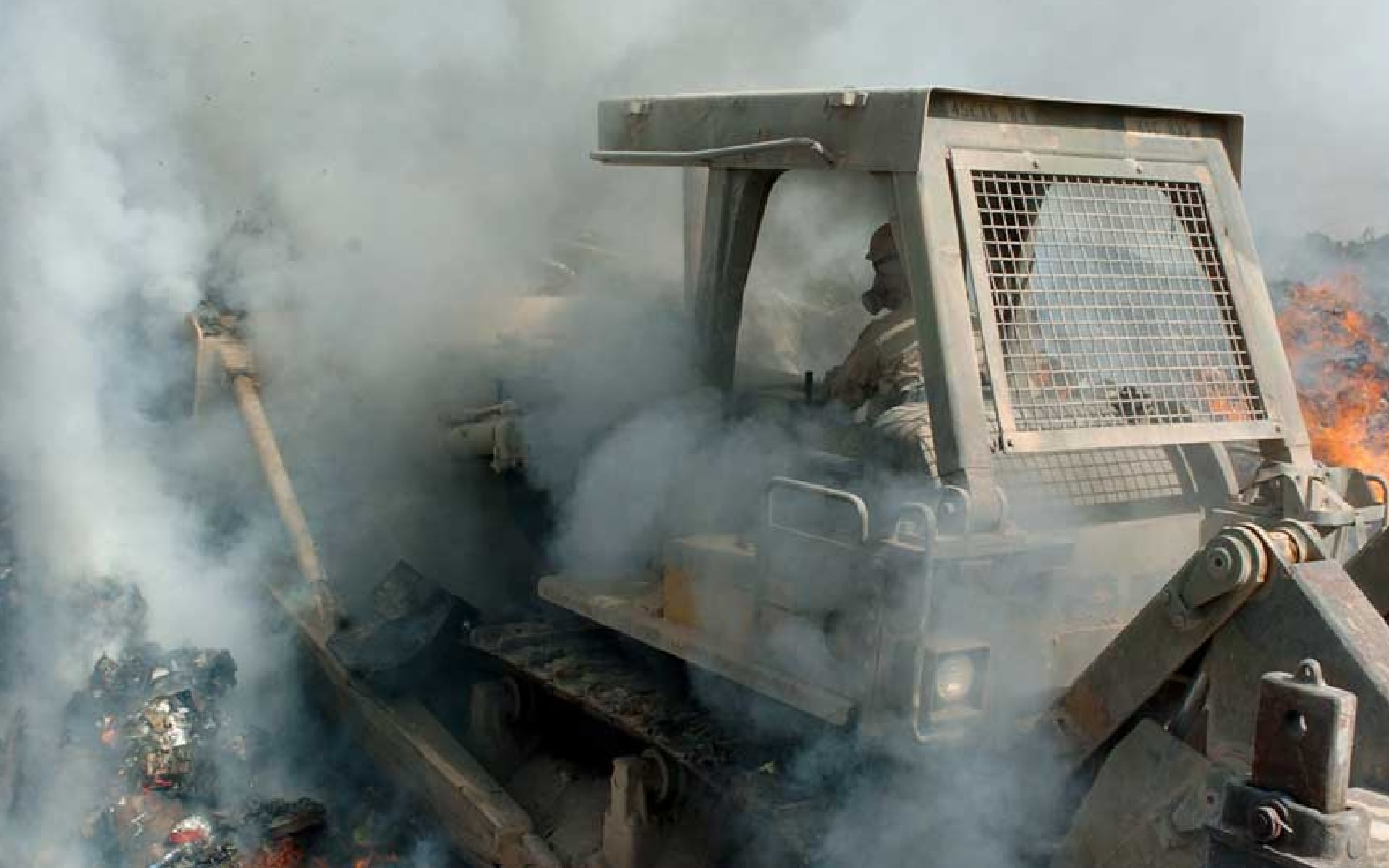EDITOR’S NOTE: In 2008, Military Times reporter Kelly Kennedy published an expansive story looking at thousands of U.S. servicemembers who may have been sickened by the toxic smoke coming out of waste pits at Joint Base Balad in Iraq. The story — the first talking about “burn pit” injuries from overseas war zones — and her subsequent work over the next year has served as the backbone for journalistic work since then looking at toxic exposure injuries from the post-9/11 wars. As the White House and Congress refocus on the issue of burn pit illnesses, Military Times is republishing those early stories to help show what officials knew, what changes have occurred since those early revelations and — perhaps most importantly — what hasn’t changed.
As scientists, environmentalists and military officials debate the potential health effects of chemicals released at burn pits throughout Iraq and Afghanistan, troops are increasingly voicing their concerns.
More than 100 service members have written letters to Military Times. Among them are four who say they developed tumors. Three have chronic sinus problems, three have leukemia, three have Hodgkin’s lymphoma, seven have chronic coughs, seven have chronic headaches, five have asthma, one has nosebleeds, five have chronic respiratory problems, one had a stroke, two have heart problems and one suffered a collapsed lung.
RELATED

They all say their problems began while exposed to smoke from burn pits in Iraq and Afghanistan—though, as of yet, the evidence remains anecdotal.
Still, “I’m alarmed at the similarities of all the people who have reported they’re sick,” said Kerry Baker, associate national legislative director for Disabled American Veterans, who has reviewed about 50 cases so far.
“It’s breathing problems, asthma, chronic bronchitis or active cancer, chronic coughs, lymphoma—but mostly leukemia. There just seems to be a pattern developing.”
Baker said most of the people he talked to had no symptoms before deploying to Iraq.
“This has to be looked at in-depth,” he said.
The military says it has looked at environmental hazards in Iraq in an in-depth manner—but the report with data on air, ground and water tests is classified.
Lyn Kukral, spokeswoman for the U.S. Army Center for Health Promotion and Preventive Medicine, said that is because the report contains details on base perimeters and building locations. When asked if it was possible to get a summary of the report’s environmental findings, she said the entire document is classified.
“They can’t keep a lock and key on this for very long,” Baker said. “They can’t keep it from Congress.”
He is asking service members and veterans who believe they are sick due to exposure to burn-pit smoke to contact DAV.
The controversy was touched off when Military Times recently reported on a memo written in late 2006 by Air Force Lt. Col. Darrin Curtis, former bioenvironmental flight commander at Joint Base Balad in Iraq, who wrote of the massive burn pit at the base:
“In my professional opinion, there is an acute health hazard for individuals. There is also the possibility for chronic health hazards associated with the smoke.”
Military officials have said they are working to clean up the mess by installing incinerators and sorting out the toxic items that have, in the past, been tossed in burn pits, including batteries, waste oil, plastic water bottles, plastic foam, unexploded ordnance and even amputated limbs.
Curtis said the many chemicals troops may have been exposed to include benzene, an aircraft fuel known to cause leukemia; arsenic; Freon; carbon monoxide; ethylbenzene; formaldehyde; hydrogen cyanide; nitrogen dioxide; sulfuric acid; and xylene.
The military has run air toxicity tests at military bases in Iraq and Afghanistan. In fact, a soldier concerned about his tour at Forward Operating Base Hammer near Balad, Iraq, this year sent Military Times a copy of an official military report showing high levels of particulate matter and low levels of manganese, possibly due to materials destroyed in a burn pit.
“The high risk estimate is due to the average [particulate matter] level being at a |concentration the Environmental Protection Agency considers ‘hazardous,’ and is likely to affect the health of all troops,” wrote Jeffrey Kirkpatrick, director of health risk assessment for the U.S. Army Center for Health Promotion and Preventive Medicine. “Manganese was also detected above its one-year military exposure guidelines.”
Particulate matter can lead to coughing, breathing and lung problems, aggravated asthma, chronic bronchitis, irregular heartbeat, nonfatal heart attacks and premature death in people with heart or lung disease, according to the EPA.
Long-term exposure to high levels of manganese can lead to problems in the central nervous system, such as slow visual reaction time, inability to keep the hands steady, and poor eye-hand coordination. It can lead to feelings of weakness, tremors, a masklike face and psychological effects. It can also lead to impotence and loss of libido, according to the EPA.
“I just returned from a 15-month deployment from FOB Hammer, and some of us found a document saying that the level of a certain type of metal in the air was above military standards and to expect soldiers to become ill,” wrote the soldier, who asked not to be named for fear of repercussions. “There were burn pits there, and our base was located less than two miles from an Iraqi brick factory.”
The report states that the particulate matter will spark more medical visits and respiratory infections in generally healthy troops, and heavy aerobic activity may increase the effects.
The report said the risk from particulates was “marginal.” However, one sample was 6½ times above the acceptable military standard.
The report also states the risk estimate is low, but confidence in the samples is also low because only two were taken.
A second report of samples taken at Joint Base Balad also found little reason for concern, according to the Army Center for Health Promotion and Preventive Medicine authors.
Both cancer and noncancer risks were “not routinely above deployment military exposure guidelines,” though, again, the authors noted that the confidence level in the report is low. They also did not address particulate matter in the report because that is being addressed in another report, according to the authors.
Cate Jenkins, senior chemist in the EPA’s Hazardous Waste Identification Division, has argued that ground zero in New York City should be declared a “superfund” pollution site because of asbestos, and fought for a criminal investigation of the chemical company Monsanto, saying it purposely manipulated studies of the effects of Agent Orange on humans.
Jenkins said the Army chemical reports seem to have been drawn up properly, though she stressed that she couldn’t speak to the testing methods themselves. But she said more needs to be done.
RELATED

And a couple of paragraphs were simply wrong, she said.
The Balad report, for example, calls dioxin a “promoter,” not an “initiator,” meaning it supposedly does not start a new cancer growing but appears to promote cancer of various types that already exist, Jenkins said.
The report then states that dioxin is a “known human carcinogen,” according to the International Agency for Research on Cancer and the EPA.
Jenkins said dioxin is a known carcinogen to the majority of the scientific community, and called the report’s language a “misinterpretation of the health effects of dioxins.”





